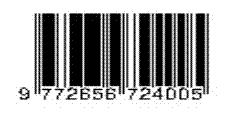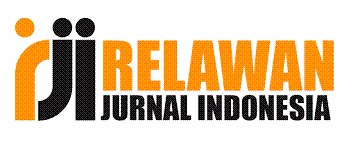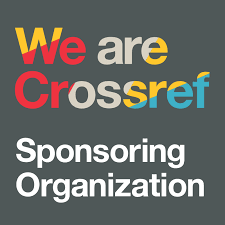Innovative Mathematics Learning : Designing Student Worksheet with Augmented Reality with Lempok Durian Context
Abstract
The use of Augmented Reality (AR) in learning can provide an interactive learning experience that can enhance student engagement. This research aims to produce mathematics worksheet using the context of South Sumatra's typical food namely lempok durian in ratio, which is valid, practical, and has a potential effect on the accuracy of the learning outcomes of seventh-grade students in Palembang. This research is research and development with the ADDIE model. (Analysis, Design, Development, Implementation, and Evaluation). Data is collected through lifts, interviews, and quantitatively and qualitatively analyzed tests. The results of the study showed ratio mathematical material using the lempok durians context is valid based on validator assessment with a validity rating of 0.89 including the high validity category, practical based on the elevation of student response with a practicality rating of 4.13 including very practical category, and has potential effects based on learning results of students with a percentage of the potential effect of 82.6% including the very high category. The development of worksheets with Augmented Reality can be implied by being used as a supporting medium in mathematics learning in an effort to improve learning outcomes and student motivation
References
Aditama, P. W., Adnyana, I. N. W., & Ariningsih, K. A. (2019). Augmented reality dalam multimedia pembelajaran. 1(1), 1–7https://www.researchgate.net/publication/334362261
Alzahrani, N. M. (2020). Augmented reality: A systematic review of its benefits and challenges in e-learning contexts. In Applied Sciences (Switzerland), 10(16). https://doi.org/10.3390/app10165660
Bantining Ngastiti, P. T., Umam, A. K., & Alfan, A. (2022). Using augmented reality-based e-Book for Improving Students’ Learning Motivation in Analytical Geometry Course. Jurnal Pendidikan MIPA, 23(2). https://doi.org/10.23960/jpmipa/v23i2.pp624-632
Bulut, M., & Ferri, R. B. (2023). A systematic literature review on augmented reality in mathematics education. In European Journal of Science and Mathematics Education 11 (3). https://doi.org/10.30935/scimath/13124
Cahyadi, R. A. H. (2019). Pengembangan bahan ajar berbasis ADDIE model. Halaqa: Islamic Education Journal, 3(1), 35–42. https://doi.org/10.21070/halaqa.v3i1.2124
Fauzi, I., & Arisetyawan, A. (2020). Analisis kesulitan belajar siswa pada materi geometri di sekolah dasar. Jurnal Matematika Kreatif-Inovatif, 11(1), 27–35. https://doi.org/10.15294/kreano.v11i1.20726
Fitria, A. D., Mustami, Muh. K., & Taufiq, A. U. (2017). Pengembangan media gambar Berbasis Potensi Lokal pada Pembelajaran Materi Keanekaragaman Hayati di Kelas X di SMA 1 Pitu Riase Kab. Sidrap. Jurnal Pendidikan Dasar Islam, 4(2), 14–28. https://doi.org/10.24252/auladuna.v4i2a2.2017
Gunawijaya, I. W. T. (2021). E-learning menjadi platform pembelajaran era society 5.0. PRAMANA Jurnal Hasil Penelitian, 1(1), 89–97.
Guntur, M. I. S., Setyaningrum, W., Retnawati, H., & Marsigit, M. (2020). Assessing the potential of augmented reality in education. ACM International Conference Proceeding Series, 93–97. https://doi.org/10.1145/3377571.3377621
Hanafi, H. F., Said, C. S., Wahab, M. H., & Samsuddin, K. (2017). Improving students’ motivation in learning ICT course with the use of a mobile augmented reality learning environment. IOP Conference Series: Materials Science and Engineering, 226(1). https://doi.org/10.1088/1757-899X/226/1/012114
Hartatiana, Wulansari, N. A., Efriani, A., Paradesa, R., Wardani, A. K., & Muslimahayati. (2023). Ethnomathematics in gending Sriwijaya dance as a context for student worksheets. AIP Conference Proceedings, 2811(1). https://doi.org/10.1063/5.0142272
Lisnani, Zulkardi, Putri, R.I.I, & Somakim (2020). Pengenalan bangun datar melalui konteks museum negeri sumatera selatan balaputera dewa. Mosharafa: Jurnal Pendidikan Matematika Etnomatematika:. 9(3). http://journal.institutpendidikan.ac.id/index.php/mosharafa
Jabar, J. M., Hidayat, R., Samat, N. A., Rohizan, M. F. H., Rosdin, N. ‘Ain, Salim, N., & Norazhar, S. A. (2022). Augmented reality learning in mathematics education: A systematic literature review. Journal of Higher Education Theory and Practice, 22(15). https://doi.org/10.33423/jhetp.v22i15.5570
Korkmaz, E., & Morali, H. S. (2022). A meta-synthesis of studies on the use of augmented reality in mathematics education. International Electronic Journal of Mathematics Education, 17(4). https://doi.org/10.29333/iejme/12269
Lai, J. W., & Cheong, K. H. (2022). Adoption of virtual and augmented reality for mathematics education: A Scoping Review. IEEE Access, 10. https://doi.org/10.1109/ACCESS.2022.3145991
Mashuri, S., Djidu, H., & Ningrum, R. K. (2019). Problem-based learning dalam pembelajaran matematika: upaya guru untuk meningkatkan minat dan prestasi belajar siswa. Pythagoras: Jurnal Pendidikan Matematika, 14(2), 112–125. https://doi.org/10.21831/pg.v14i2.25034
Mursyidah, D., & Saputra, E. R. (2022). Aplikasi berbasis augmented reality sebagai upaya pengenalan bangun ruang bagi siswa sekolah dasar. Jurnal Pendidikan Dasar, 4(1), 427–433.
Nizar, H., & Rahmawati, D. (2024). Learning circle using gobak sodor game context in eighth grade. INOMATIKA, 6(1), 19–30. https://doi.org/10.35438/inomatika.v6i1.418
Noprisa, N., Lestari, F., Hardianti, D., Desmayanasari, D., Asyhara, S.,A., Efendi, E., Rizko, D., & Kurnia, E. (2024). Traditional house of lampung kedatun keagungan: ethnomathematics exploration. INOMATIKA, 6(1), 1–18. https://doi.org/10.35438/inomatika.v6i1.417
Oktina Harini, E., & Pujiriyanto. (2022). Analysis benefits of integrating augmented reality in worksheet at elementary school. Jurnal EPISTEMA, 3(2).13-19

























